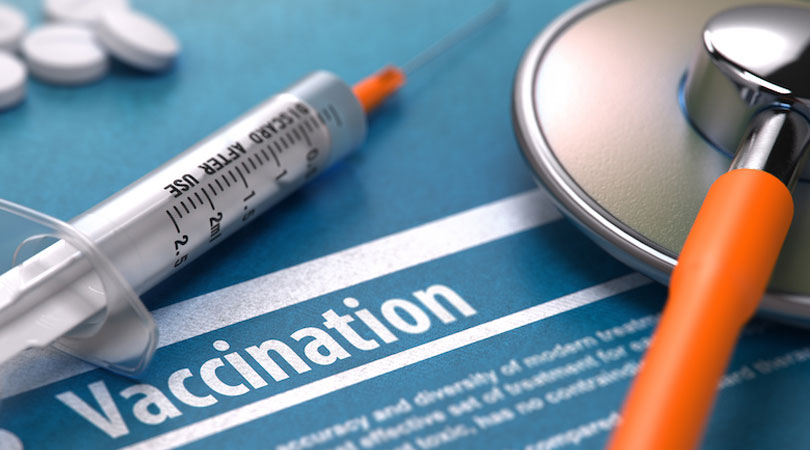
What is a Vaccination?
The body’s immune system helps protect against pathogens that cause infection. Most of the time, it’s an efficient system. It either keeps microorganisms out or tracks them down and gets rid of them. However, some pathogens can overwhelm the immune system. When this happens, it can cause serious illness.
The pathogens most likely to cause problems are the ones the body doesn’t recognize. Vaccination is a way to “teach” the immune system how to recognize and eliminate an organism. That way, your body is prepared if you’re ever exposed. Vaccinations are an important form of primary prevention. That means they can protect people from getting sick. Vaccinations have allowed us to control diseases that once threatened many lives, such as:
- Measles
- Polio
- Tetanus
- Whooping cough
It’s important that as many people as possible get vaccinated. Vaccinations don’t just protect individuals. When enough people are vaccinated, it helps protect society. This occurs through herd immunity. Widespread vaccinations make it less likely that a susceptible person will come into contact with someone who has a particular disease.
A healthy immune system defends against invaders. The immune system is composed of several types of cells. These cells defend against and remove harmful pathogens. However, they have to recognize that an invader is dangerous.
Vaccination teaches the body to recognize new diseases. It stimulates the body to make antibodies against antigens of pathogens. It also primes immune cells to remember the types of antigens that cause infection. That allows for a faster response to the disease in the future.
Vaccines work by exposing you to a safe version of a disease. This can take the form of:
- A protein or sugar from the makeup of a pathogen
- A dead or inactivated form of a pathogen
- A toxoid containing toxin made by a pathogen
- A weakened pathogen
When the body responds to the vaccine, it builds an adaptive immune response. This helps equip the body to fight off an actual infection.
Vaccines are usually given by injection. Most vaccines contain two parts. The first is the antigen. This is the piece of the disease your body must learn to recognize. The second is the adjuvant.
The adjuvant sends a danger signal to your body. It helps your immune system to respond more strongly against the antigen as an infection. This helps you develop immunity.
Vaccines are highly effective, but no vaccine is 100 percent effective. The effectiveness rate for vaccines differs from one type to the next.
Flu vaccines are effective in lowering the risk of infection by 40 to 60 percent in people who get the shot. That may sound low, but keep in mind the flu vaccine is designed to match the strain of the flu scientists expect to be most abundant in a coming flu season.
If they’re wrong, the vaccine may be less effective. If they’re right, the rate of protection may be higher.
The measles vaccine, on the other hand, is 98 percent effective when used as recommended. Indeed, most childhood vaccines are 85 to 95 percent effective if administered properly, according to the World Health Organization (WHO).
Vaccines are given in childhood to help protect their young immune systems against a range of potentially deadly diseases. Infants have a natural immunity from their mothers in their earliest months. As that begins to wane, vaccines are given to take over and help keep babies from falling ill.
Vaccines help protect children against diseases that their friends, playmates, classmates, and family members may introduce to them. That’s why some vaccines require a booster, or a follow-up dose, as children near school age. The booster shot helps reinforce your child’s defenses against illness.
The U.S. Centers for Disease Control and Prevention (CDC) sets a recommended vaccine schedule. Many vaccines are delivered in a group or vaccine series. However, if you’d like to space your child’s vaccines out more, talk with your child’s doctor about your preference.
Vaccines are a lifelong defense against illness. While childhood vaccines are important, you may receive injections or boosters throughout your entire life.
Infancy and early childhood vaccinations list
By the time your child starts elementary school, they should have received:
- Hepatitis B Vaccine
- DTaP (Diphtheria, Tetanus and Pertussis) Vaccine
- Haemophilus Influenzae type B Vaccine (Hib)
- Pneumococcal Conjugate Vaccine (PCV)
- Inactivated Poliovirus Vaccine (IPV)
- Measles, Mumps and Rubella (MMR) Vaccine
- Varicella (Chickenpox) Vaccine
- Rotavirus (RV) Vaccine
- Influenza Vaccine (Yearly after 6 months of age)
Middle childhood vaccinations list
In addition to the most common childhood vaccinations, your doctor may recommend these vaccines for your child:
- Varicella (Chickenpox) Vaccine
- Measles, Mumps and Rubella (MMR) Vaccine
- Hepatitis A Vaccine
- Yearly Influenza Vaccine
Young adult vaccinations list
As your child grows older, other vaccines may be recommended. These include:
- Human papillomavirus (HPV) vaccine
- Meningococcal Vaccine
- Tdap Booster
- Yearly Influenza Vaccine
Adult vaccinations list
Older adults should receive:
- Annual Flu Shots
- Pneumonia Vaccines
- Tetanus Boosters



